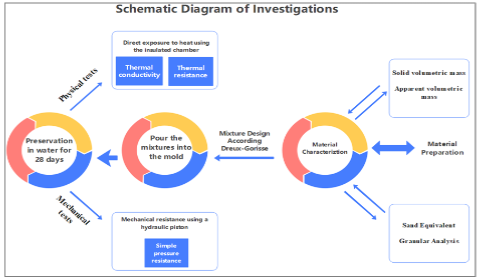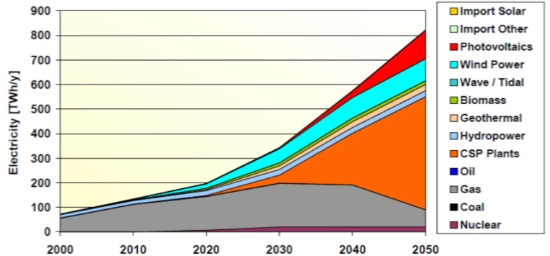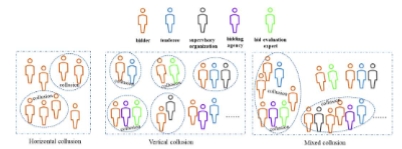Fighting for collusive bidding in the construction industry: A text mining-enabled approach
Abstract
Policy measures are crucial for regulating collusive bidding and are integral to effective governance. However, current research lacks a comparative exploration of strategies to combat collusive bidding through policy. Therefore, this study aims to identify more effective countermeasures by examining policy variations between regions with low and high incidences of collusive bidding. Using Latent Dirichlet Allocation (LDA) topic modeling, the study extracts key themes from these policies, while qualitative analysis highlights differences in approaches. It underscores that integrating electronic and information technology into bidding systems significantly reduces collusive practices. While increasing penalties can deter collusive bidding, achieving desired impacts requires thorough investigation and vigilant oversight. Additionally, strengthening external supervision enhances control over such activities. This study identifies critical governance strategies for addressing collusive bidding and advocates further research into more effective methods within the construction sector.
References
[1]Wang X, Owusu EK, Ye K. Impacts of External Environmental Factors on the Collusive Team Scale in Bidding: The Case of China. Journal of Management in Engineering. 2023; 39(4). doi: 10.1061/jmenea.meeng-5270
[2]Chotibhongs R, Arditi D. Analysis of collusive bidding behavior. Construction Management and Economics. 2012; 30(3): 221-231. doi: 10.1080/01446193.2012.661443
[3]Shan M, Chan APC, Le Y, et al. Understanding Collusive Practices in Chinese Construction Projects. Journal of Professional Issues in Engineering Education and Practice. 2017; 143(3). doi. 10.1061/(asce)ei.1943-5541.0000314
[4]Souhu. Suspects of bidding rigging in Fengcheng power plant accident that caused more than 70 deaths were repatriated (Chinese). Available online: https://www.sohu.com/a/143592434_805762 (accessed on 15 September 2024).
[5]Souhu. The pass rate of the pile foundation is 0! The construction unit compensated 108 million yuan! The 800 million “problem road” bidders were sentenced! Many people have been arrested before. Available online: https://www.sohu.com/a/473060028_121123774 (accessed on 15 September 2024).
[6]Wang X, Ye K, Arditi D. Embodied cost of collusive bidding: evidence from China’s construction industry. Journal of Construction Engineering and Management. 2021; 147(6): 04021037. doi. 10.1061/(ASCE)CO.1943-7862.0002044
[7]Shi HB, Li XW, Xu HJ. Game Analysis on Collusion Tender in the Construction Projects Bidding. Applied Mechanics and Materials. 2013; 357-360: 2414-2419. doi: 10.4028/www.scientific.net/amm.357-360.2414
[8]Shan M, Le Y, Yiu KTW, et al. Assessing Collusion Risks in Managing Construction Projects Using Artificial Neural Network. Technological and Economic Development of Economy. 2018; 24(5): 2003-2025. doi: 10.3846/20294913.2017.1303648
[9]Zhu W, Zheng Y, Ye K, et al. Deterrence of Punitive Measures on Collusive Bidding in the Construction Sector. Complexity. 2021; 2021: 1-12. doi: 10.1155/2021/9913413
[10]Wang X, Arditi D, Ye K. Coupling Effects of Economic, Industrial, and Geographical Factors on Collusive Bidding Decisions. Journal of Construction Engineering and Management. 2022; 148(7). doi: 10.1061/(asce)co.1943-7862.0002291
[11]Long W, Wang X, Liang Y, et al. Characteristics of Collusive Practices in Bidding: Mixed Methods Study in China. Journal of Construction Engineering and Management. 2023; 149(6). doi: 10.1061/jcemd4.coeng-12938
[12]Wang X, Long W, Sang M, et al. Towards Sustainable Urbanization: Exploring the Influence Paths of the Urban Environment on Bidders’ Collusive Willingness. Land. 2022; 11(2): 280. doi: 10.3390/land11020280
[13]Brown J, Loosemore M. Behavioral factors influencing corrupt action in the Australian construction industry. Engineering, Construction and Architectural Management. 2015; 22(4): 372-389. doi: 10.1108/ecam-03-2015-0034
[14]Roux C, Thöni C. Collusion among many firms: The disciplinary power of targeted punishment. Journal of Economic Behavior & Organization. 2015; 116: 83-93. doi: 10.1016/j.jebo.2015.03.018
[15]Tabish SZS, Jha KN. The impact of anti-corruption strategies on corruption free performance in public construction projects. Construction Management and Economics. 2012; 30(1): 21-35. doi: 10.1080/01446193.2011.654128
[16]Harrington JE. Penalties and the deterrence of unlawful collusion. Economics Letters. 2014; 124(1): 33-36. doi: 10.1016/j.econlet.2014.04.010
[17]Cheng Z, Ke Y, Yang Z, et al. Diversification or convergence. Engineering, Construction and Architectural Management. 2020; 27(6): 1315-1335. doi: 10.1108/ecam-06-2019-0290
[18]Morselli C, Ouellet M. Network similarity and collusion. Social Networks. 2018; 55: 21-30. doi: 10.1016/j.socnet.2018.04.002
[19]Zhang B, Le Y, Xia B, Skitmore M. Causes of Business-to-Government Corruption in the Tendering Process in China. Journal of Management in Engineering. 2017; 33(2): 05016022. doi. 10.1061/(asce)me.1943-5479.0000479
[20]Baranes E, Mirabel F, Poudou JC. Collusion Sustainability with Multimarket Contacts: Revisiting HHI Tests. Theoretical Economics Letters. 2012; 2(3): 307-315. doi: 10.4236/tel.2012.23057
[21]Bolotova Y, Connor JM, Miller DJ. The impact of collusion on price behavior: Empirical results from two recent cases. International Journal of Industrial Organization. 2008; 26(6): 1290-1307. doi: 10.1016/j.ijindorg.2007.12.008
[22]Dorée AG. Collusion in the Dutch construction industry: An industrial organization perspective. Building Research & Information. 2004; 32(2): 146-156. doi: 10.1080/0961321032000172382
[23]Price MK. Using the Spatial Distribution of Bidders to Detect Collusion in the Marketplace: Evidence from Timber Auctions. Journal of Regional Science. 2008; 48(2): 399-417. doi: 10.1111/j.1467-9787.2008.00557.x
[24]Ratshisusu H. Limiting collusion in the construction industry: A review of the bid-rigging settlement in South Africa. Journal of Economic and Financial Sciences. 2014; 7(4): 587-606. doi: 10.4102/jef.v7i4.386
[25]Stigler GJ. A Theory of Oligopoly. Journal of Political Economy. 1964; 72(1): 44-61. doi: 10.1086/258853
[26]Wang X, Liu R, Ye K, Tekka RS. Modelling the cost of collusion in the construction industry: a case of China. In: Proceedings of the 36th Annual ARCOM Conference; UK: Association of Researchers in Construction Management; 7-8 September 2020; UK.
[27]Oke A, Aigbavboa C, Mangena Z. Prevention of Collusion for Innovative Construction. Procedia Engineering. 2017; 196: 491-497. doi: 10.1016/j.proeng.2017.07.229
[28]Tirole J. Collusion and the theory of organizations. Advances in Economic Theory: Sixth World Congress. 1992; 2(1): 1-25.
[29]Allain ML, Boyer M, Kotchoni R, et al. Are cartel fines optimal? Theory and evidence from the European Union. International Review of Law and Economics. 2015; 42: 38-47. doi: 10.1016/j.irle.2014.12.004
[30]Katsoulacos Y, Motchenkova E, Ulph D. Penalizing cartels: The case for basing penalties on price overcharge. International Journal of Industrial Organization. 2015; 42: 70-80. doi: 10.1016/j.ijindorg.2015.07.007
[31]Morgan EJ. Controlling cartels—Implications of the EU policy reforms. European Management Journal. 2009; 27(1): 1-12. doi: 10.1016/j.emj.2008.04.006
[32]Zarkada-Fraser A. A Classification of Factors Influencing Participating in Collusive Tendering Agreements. Journal of Business Ethics. 2000; 23(3): 269-282. doi. 10.1023/A:1006210308373
[33]Chotibhongs R, Arditi D. Detection of Collusive Behavior. Journal of Construction Engineering and Management. 2012; 138(11): 1251-1258. doi. 10.1061/(asce)co.1943-7862.0000542
[34]Ballesteros-Pérez P, González-Cruz MC, Cañavate-Grimal A, et al. Detecting abnormal and collusive bids in capped tendering. Automation in Construction. 2013; 31: 215-229. doi: 10.1016/j.autcon.2012.11.036
[35]Erfani AK, Zhang, Cui Q. TAB Bid Irregularity: Data-Driven Model and Its Application. Journal of Management in Engineering. 2021; 37(5): 04021055. doi: 10.1061/(ASCE)ME.1943-5479.0000958
[36]Porter RH, Zona JD. Detection of Bid Rigging in Procurement Auctions. Journal of Political Economy. 1993; 101(3): 518-538. doi: 10.2307/2138774
[37]Padhi SS, Mohapatra PKJ. Detection of collusion in government procurement auctions. Journal of Purchasing and Supply Management. 2011; 17(4): 207-221. doi: 10.1016/j.pursup.2011.03.001
[38]Padhi SS, Wagner SM, Mohapatra PKJ. Design of Auction Parameters to Reduce the Effect of Collusion. Decision Sciences. 2015; 47(6): 1016-1047. doi: 10.1111/deci.12159
[39]Pulid. Peking University Legal Information Database. 2021. Available online: https://www.pkulaw.com/ (accessed on 15 September 2024).
[40]Danesh F, Dastani M, Ghorbani M. Retrospective and prospective approaches of coronavirus publications in the last half-century: A Latent Dirichlet allocation analysis. Library Hi Tech. 2021; 39(3): 855-872. doi: 10.1108/lht-09-2020-0216
[41]Wang X, Ye K, Chen M, Yao Z. A Conceptual Framework for the Inclusion of Exogenous Factors into Collusive Bidding Price Decisions. Journal of Management in Engineering. 2021; 37(6): 04021071. doi. 10.1061/(asce)me.1943-5479.0000981
[42]Ishii R. Can E-Procurement Reduce Bid Rigging in Public Auctions? Journal of Competition Law & Economics. 2021; 18(2): 456-482. doi: 10.1093/joclec/nhab019
[43]Mohamed N, Marsam AD, Abu NA, et al. Civil servants’ responses on whistleblowing towards better governance. Revista de Ciencias Sociales y Humanidades. 2019; 4(16): 132-135.
Copyright (c) 2024 Xiaowei Wang, Keda Chen, Yuqing Zhang

This work is licensed under a Creative Commons Attribution 4.0 International License.












